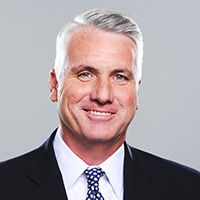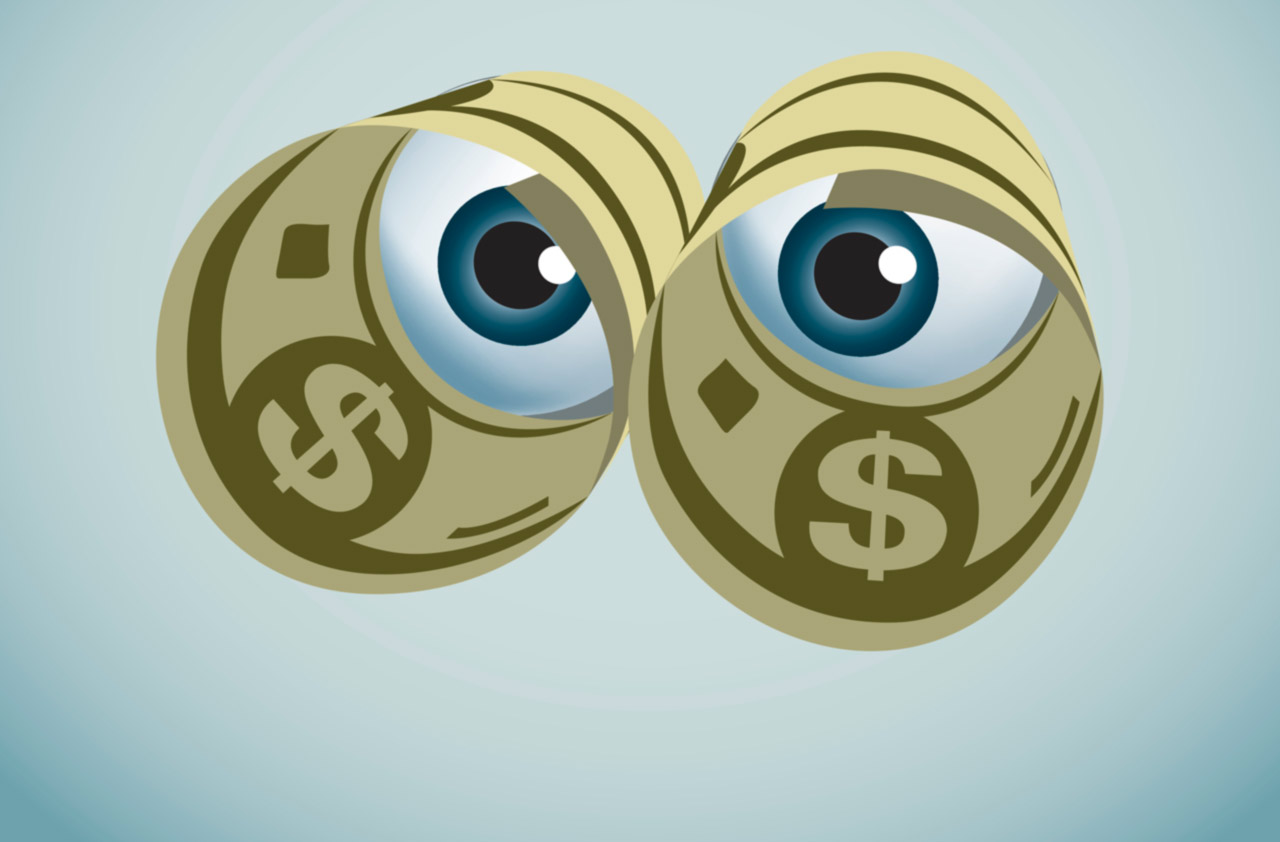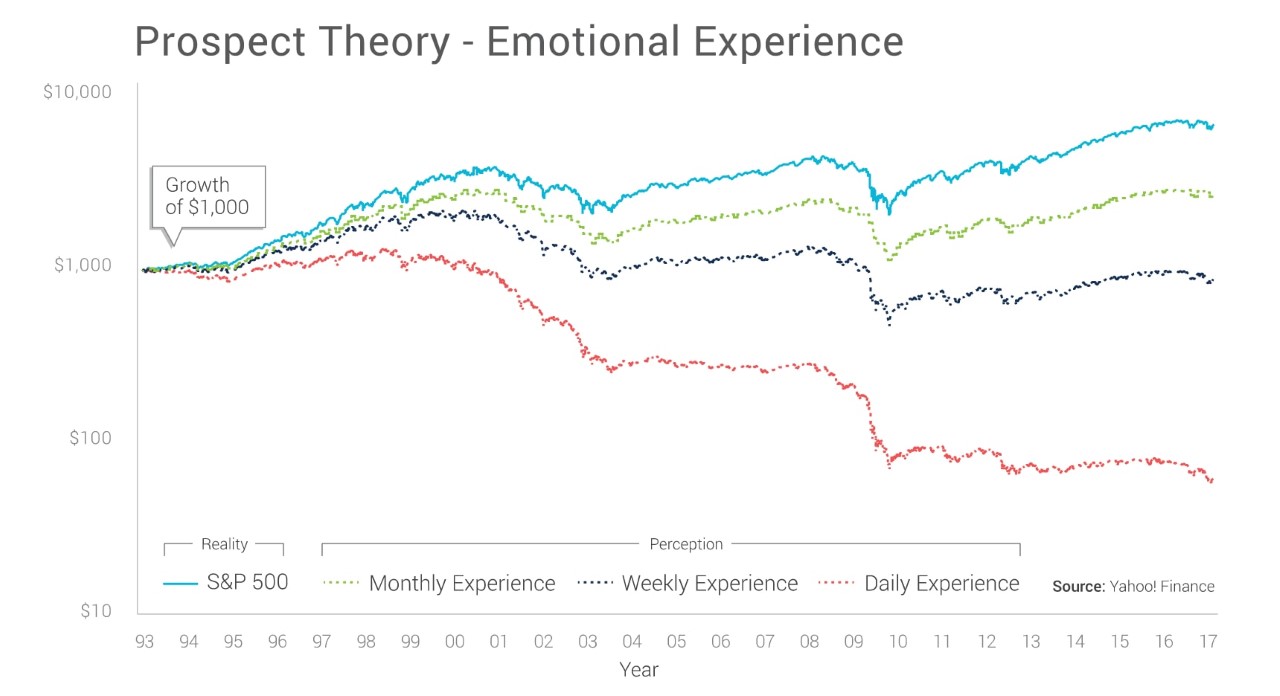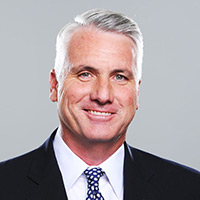A Watched Portfolio Never Performs
The more you agonize over your investment portfolio, the worse you think it's performing ... even when it's doing really well.


Perception is reality when it comes to a portfolio.
Many investors feel like their portfolios are always underperforming. No matter how well diversified or how many best-in-class strategies they own, it rarely feels like they're making progress.
The reason it feels this way is the same reason a watched pot never boils: the observer effect. By simply looking at our portfolios, we are affecting our performance.
From just $107.88 $24.99 for Kiplinger Personal Finance
Become a smarter, better informed investor. Subscribe from just $107.88 $24.99, plus get up to 4 Special Issues

Sign up for Kiplinger’s Free Newsletters
Profit and prosper with the best of expert advice on investing, taxes, retirement, personal finance and more - straight to your e-mail.
Profit and prosper with the best of expert advice - straight to your e-mail.
We are all aware of how making emotional decisions can destroy portfolio returns. But few are aware that how we mentally perceive performance can affect how we make investment decisions — even more so than the cold, hard facts.
Effects of prospect theory
The gap between performance and perceived performance is explained by prospect theory. Investopedia describes prospect theory as a phenomenon where “… losses cause greater emotional impact on an individual than does an equivalent amount of gain…”
This might be because fear is an absolute emotion and greed is a relative one. Fear is essential to our survival instincts and thus, we are inclined to draw out negativity to its worst conclusion. In the inverse, we expect good things to happen so we discount positivity. Even when things are the best and we’re comfortably in pursuit of greed, we are relatively certain that at any moment the other shoe is about to drop.
Whatever the explanation, this influence on investors’ psyches and their subsequent behavior can have a devastating impact on investment results.
The emotional experience of investing
The chart below shows how our perceptions, or misconceptions, can distort reality and create pain.

It depicts a simple example of how an investor might experience prospect theory: The raw performance of the S&P 500 index is in solid blue. However, since each person’s emotional experience changes depending on how often they observe this performance, we demonstrate the likely emotional experience in the dotted lines.
The green dotted line is how an investor, according to prospect theory, will perceive the portfolio if they look at it monthly. The dark blue dotted line is if they look at it weekly. The red dotted line is if they look at it daily.
In reality, the S&P 500 appreciated by over 700% during this time period. Investors who checked their investment results just one time, after 23 years, would see this very large gain. Plus they would not have experienced any of the volatility (and corresponding fear or greed) along the way. In other words, these investors avoided the negative effects of prospect theory.
On the other hand, investors who viewed their investment results monthly, according to the theory, would have a very different emotional experience. Remember, the theory suggests that a 10% gain feels moderately good, while a 10% loss feels exceptionally bad. At a monthly frequency, over 23 years, that’s 276 opportunities for prospect theory to create negative emotions.
The impact gets much worse the more frequent the observations. This leads to a dangerous cycle between fear, greed and prospect theory: When things are good, performance is discounted, and when they’re bad, investors overreact. This skewed perception enhances fear or greed, leading to more emotional decision-making that seems to never pay off. Why? Because the good is never good enough and the bad feels worse than it actually is. And the cycle continues.
Cure the negative feedback cycle
Now, we know investors aren’t going to just ignore their portfolios. They might get notifications from CNBC and Bloomberg on favorite stocks. Major social, economic or political movements around the globe will still send investors rushing to check the effect on their portfolios.
But at least investors can be conscious of the enemy — their own emotions.
Despite the influx of information, there’s still an easy way to counter prospect theory: portfolio balance. The more balanced a portfolio is, the less volatility it’ll experience. Lower drawdowns mean less fear and greed, which of course means fewer emotional decisions and reduced effects of prospect theory. Awareness of this pattern helps, too.
Finding balance in today’s economy
Being aware of the benefits of true diversification and the damage that fear and greed can do is as crucial as keeping up with the financial news. Being aware of the games that prospect theory can play with the mind is nearly as important as choosing quality investments, at least if investors are seeking to achieve a balanced portfolio that helps them feel in control of their financial futures.
Otherwise, even when they’re making money, they’ll never feel like they’re keeping up with the Joneses.
Profit and prosper with the best of Kiplinger's advice on investing, taxes, retirement, personal finance and much more. Delivered daily. Enter your email in the box and click Sign Me Up.

Stephen Scott is an alternatives and hedge fund investment veteran, with more than 25 years of experience in due diligence, risk management and index construction.
-
 Are T-Mobile's Prepaid Perks a Home Run or a Strikeout?
Are T-Mobile's Prepaid Perks a Home Run or a Strikeout?T-Mobile's prepaid lineup promises MLB.TV, T-Mobile Tuesdays and hotspot data. But do the perks make it worth switching?
-
 Verizon Home Internet Is Offering Free Tech to New Customers
Verizon Home Internet Is Offering Free Tech to New CustomersVerizon’s latest home-internet promotion includes free tech, but the real savings depend on pricing, speed needs and how long you stay.
-
 Retirees in These 7 States Could Pay Less Property Taxes Next Year
Retirees in These 7 States Could Pay Less Property Taxes Next YearState Taxes Retirement property tax bills could be up to 65% cheaper for some older adults in 2026. Do you qualify?
-
 5 Smart Things to Do With Your Year-End Bonus, From a Financial Professional
5 Smart Things to Do With Your Year-End Bonus, From a Financial ProfessionalAfter you indulge your urge to splurge on a treat, consider doing adult things with the extra cash, like paying down debt, but also setting up a "fun fund."
-
 Are You a Gen X Investor? Here's How You Can Protect Your Portfolio From an AI Bubble
Are You a Gen X Investor? Here's How You Can Protect Your Portfolio From an AI BubbleAmid talk of an AI bubble, what's the best course of action for investors in their 50s and 60s, whose retirement savings are at risk from major market declines?
-
 Hey, Retirees: Put Your Charitable Gifts in a Donor-Advised Fund (and Enjoy Your Tax Break)
Hey, Retirees: Put Your Charitable Gifts in a Donor-Advised Fund (and Enjoy Your Tax Break)A donor-advised fund is a simple (really!), tax-smart strategy that lets you contribute a large, tax-deductible gift now and then distribute grants over time.
-
 If You're a U.S. Retiree Living in Portugal, Your Tax Plan Needs a Post-NHR Strategy ASAP
If You're a U.S. Retiree Living in Portugal, Your Tax Plan Needs a Post-NHR Strategy ASAPWhen your 10-year Non-Habitual Resident tax break ends, you could see your tax rate soar. Take steps to plan for this change well before the NHR window closes.
-
 Could Target-Date Funds With Built-In Income Guarantees Be the Next Evolution in Retirement Planning?
Could Target-Date Funds With Built-In Income Guarantees Be the Next Evolution in Retirement Planning?With target-date funds falling short on income certainty, retirement plans should integrate guaranteed income solutions. Here is what participants can do.
-
 Your Year-End Tax and Estate Planning Review Just Got Urgent
Your Year-End Tax and Estate Planning Review Just Got UrgentChanging tax rules and falling interest rates mean financial planning is more important than ever as 2025 ends. There's still time to make these five key moves.
-
 What Makes This Business So Successful? We Find Out From the Founder's Kids
What Makes This Business So Successful? We Find Out From the Founder's KidsThe children of Morgan Clayton share how their father's wisdom, life experience and caring nature have turned their family business into a respected powerhouse.
-
 Past Performance Is Not Indicative of Your Financial Adviser's Expertise
Past Performance Is Not Indicative of Your Financial Adviser's ExpertiseMany people find a financial adviser by searching online or asking for referrals from friends or family. This can actually end up costing you big-time.